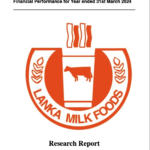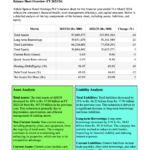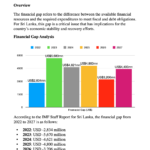The outlook for the palm oil plantation industry in Sri Lanka is complex and subject to various economic, environmental, and policy factors. Here are some key points to consider based on the provided context:
- Policy Decisions and Restrictions: The Sri Lankan government had previously decided to expand oil palm cultivation as part of a crop diversification program, with a maximum allowable extent of 20,000 hectares. However, due to environmental concerns and activism, there was a ban on new oil palm cultivation, and a phase-out of existing plantations within 10 years was proposed. This policy decision has been revised to allow the market to operate under licenses, indicating a more regulated approach to palm oil cultivation.
- Economic Significance: The palm oil industry in Sri Lanka has been economically significant, saving around USD 17 million in foreign exchange outflow annually and catering to approximately 6% of the domestic edible oil demand. The industry has also generated employment opportunities and attracted capital investments.
- Environmental Concerns: There are environmental issues associated with oil palm cultivation, such as soil erosion, water depletion, and impacts on biodiversity. These concerns have led to criticism from various groups and necessitate further investigation and sustainable management practices to mitigate negative externalities.
- Production Potential: The country’s wet zone low country regions are suitable for oil palm cultivation, with the right rainfall and dry spell conditions. However, the average productivity in Sri Lanka is below the global best average productivity levels, indicating room for improvement in cultivation practices.
- Sustainability Initiatives: There is a need for sustainability initiatives to address the environmental and social impacts of the palm oil industry. These include measures to prevent deforestation, water pollution, soil erosion, and biodiversity loss, as well as efforts to reduce greenhouse gas emissions and other pollutants.
- Future Prospects: The future of the palm oil industry in Sri Lanka will depend on the balance between economic benefits, environmental sustainability, and adherence to policy regulations. The industry may need to focus on improving productivity, adopting sustainable practices, and addressing the concerns of various stakeholders to ensure its long-term viability.
Given the dynamic nature of the industry and the evolving policy landscape, stakeholders in the palm oil industry in Sri Lanka will need to stay informed and adapt to changes to navigate the challenges and opportunities ahead.
This Report is compiled by LankaBIZ (GPT) – Sri Lanka’s First ever AI Assistant for Stock Market and Research. Click below link to ask questions about any listed company in Sri Lanka.
www.lankabizz.net
Profitability
The profitability of palm oil plantations in Sri Lanka is influenced by several factors, including global market prices, local productivity, import taxes, and exchange rates. Based on the context provided:
- Profit Margins: The average profit margin from selling fresh fruit bunches (FFB) is nearly 59%. This indicates a strong profitability potential for palm oil plantations in the country.
- Productivity: The average productivity of oil palm estates in Sri Lanka is around 2.5 metric tonnes per hectare (Mt/ha), which is lower than the best productivity levels globally (3.6 Mt/ha). Despite this, the industry remains profitable at current market prices for imported palm oil and local coconut oil.
- Economic Impact: The palm oil industry has the potential to save around USD 17 million in foreign exchange outflow annually. This is significant for a developing country like Sri Lanka, which aims to reduce the import cost of edible oil and fulfill the national edible oil requirement domestically.
- Investment and Employment: The capital investment in the industry is estimated at LKR 23 billion, and it employs over 33,390 people, contributing to the local economy and job market.
- Taxation and Tariffs: The total tax on palm oil is around 59% of the cost, insurance, and freight (CIF) price. The tax rate is highly volatile and can influence the profitability of the industry.
- Policy and Expansion: The Sri Lankan government had initiated an expansion of oil palm cultivation up to 20,000 hectares as an import substitution strategy, aiming to supply 50% of the existing palm oil demand locally. This expansion was part of a broader crop diversification program.
- Challenges: The industry faces challenges such as environmental concerns, including impacts on biodiversity and water usage. These challenges can affect the social license to operate and potentially lead to regulatory changes that may impact profitability.
In conclusion, while palm oil plantations in Sri Lanka have been profitable, their future success will depend on managing environmental impacts, improving productivity, navigating policy changes, and responding to global market dynamics.
Palm Oil Plantations in Sri Lanka
In Sri Lanka, several Regional Plantation Companies (RPCs) are involved in oil palm cultivation. As of the data provided, the following companies have significant extents of oil palm cultivation:
- Watawala Plantations PLC
- Namunukula Plantations PLC
- Elpitiya Plantations PLC
- Agalawatte Plantations PLC
- Kotagala Plantations PLC
- Kegalle Plantations PLC
- Bogawanthalawa Plantations PLC
These companies have converted some of their marginal rubber and tea lands to oil palm, expanding the total extent of oil palm cultivation in the country. They are also involved in processing palm oil through their own mills and refineries. Watawala Plantations PLC, for instance, operates a palm oil processing factory at Nakiyadeniya, which is the largest oil palm mill in Sri Lanka. Another notable processing facility is the AEN Palm oil Processing (Pvt.) Ltd at Baduraliya, which is a joint venture of Agalawatte Plantation PLC.
It’s important to note that the involvement of these companies in the palm oil industry is subject to change based on government policies, market conditions, and other factors. Therefore, for the most current information, one should refer to the latest reports and data from credible sources.















